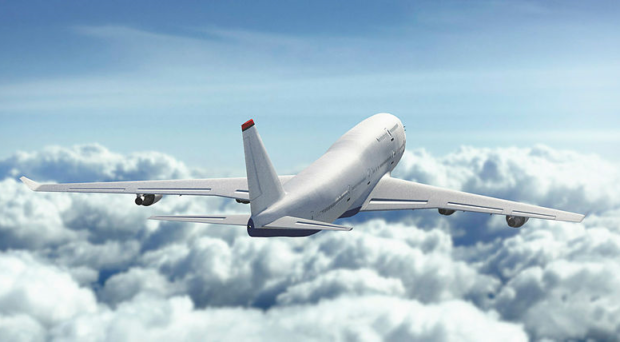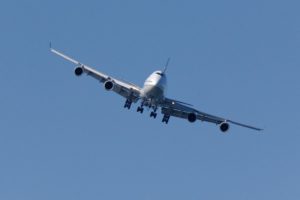
Commercial airline flight is routine in today’s globalized economy, with over 100,000 flights each day. Yet the potential health effects of flying on a regular basis remain uncertain despite the documented exposure during flight to a known carcinogen, ionizing radiation.
for airline crew, annual radiation exposure can increase by two to five fold — equivalent to receiving a CT scan about every two years
Most flights cruise at an altitude of 9-12 kilometers which is above the lowest layer of atmosphere that protects the earth’s surface from ionizing radiation. Radiation exposure from a single, transcontinental flight is low, comparable to the typical radiation exposure of a chest x-ray. But for those who fly regularly, such as airline crew, annual radiation exposure can increase by two to five fold — equivalent to receiving a CT scan about every two years.
Thyroid cancer and flying
I [GSL] became interested in the chronic health effects of in-flight radiation during medical school after learning about the increased risk of thyroid cancer from radiation. It became personal as I frequently flew transcontinental flights home for school breaks. On one of these flights, I recalled a fascinating physics lecture (pre Transportation Security Administration) in which a Geiger counter was used to measure ionizing radiation on a flight.

My next thought was, “Would airline crew, who are exposed to ionizing radiation on a regular basis as part of their occupation, experience an increased risk of thyroid cancer compared with the general population?”
To begin addressing this question, we conducted a systematic review and meta-analysis using published data on thyroid cancer rates in airline crew. We searched the scientific literature, and identified eight studies that reported data on a total of 243,088 airline crew members, spanning a data collection period between 1943 and 2008 across 11 countries.
We found no evidence of increased thyroid cancer risk in airline crew
We found no evidence of increased thyroid cancer risk in airline crew. None of the eight studies showed a statistically significant increase in risk of thyroid cancer. Aggregating the results, using a statistical method called a random-effects model, also did not change our conclusion.
That said, there are potential problems with meta-analyses and limited underlying data. As an example, our study spans a broad timeframe, and there have been many changes to aviation since 1943, including the ban of smoking on flights in the late 80s. We could not account for the possible risk associated with second hand smoking before 1988 or for other environmental exposures and risk factors, such as increased age, chemical exposures, or total lifetime radiation exposure.
Contradicting literature
A few days after our study was accepted for publication, CNN and the New York Times reported contradicting findings to our results in that “flight attendants get more uterine, thyroid and other cancers”.
These headlines were based on a recent paper in Environmental Health, in particular on the paper’s statement that “flight attendants… had a higher prevalence of every cancer we examined” compared with the general population.
However, the higher prevalence of cancers was statistically significant for only three of the cancers examined: breast cancer, melanoma, and non-melanoma skin cancer. Cancers of the uterus, thyroid and other sites did not show a significant difference when compared with the general population.
Reporting negative results is useful

While we support drawing attention to factors that increase the risk of cancer, it should be scientists’ and the media’s obligation to report real information and not cause undue alarm. In fact, our work and this study indicate no evidence of increased thyroid cancer among flight attendants compared to the general population.
We call on the authors of the paper in Environmental Health and the media to correct their statements. Otherwise, they risk misrepresenting the study’s findings to the public. We propose that it would have been more informative and helpful to the public to recommend actions based upon the paper’s findings. For example, the observed increased prevalence of breast cancer, melanoma, and non-melanoma skin cancer should prompt further investigation and regular health care screening for flight attendants.
Accurately presenting information in the media is an important responsibility in today’s society. Although reporting negative results is often tough because it is seen as less “impactful” and “newsworthy”, it is actually quite informative for the public. Wouldn’t the hundreds of thousands of flight attendants feel better knowing that the prevalence of uterine and thyroid cancers within their employment sector did not differ from those of the general population? Let’s use the power of the media to provide accurate and helpful information.
Comments